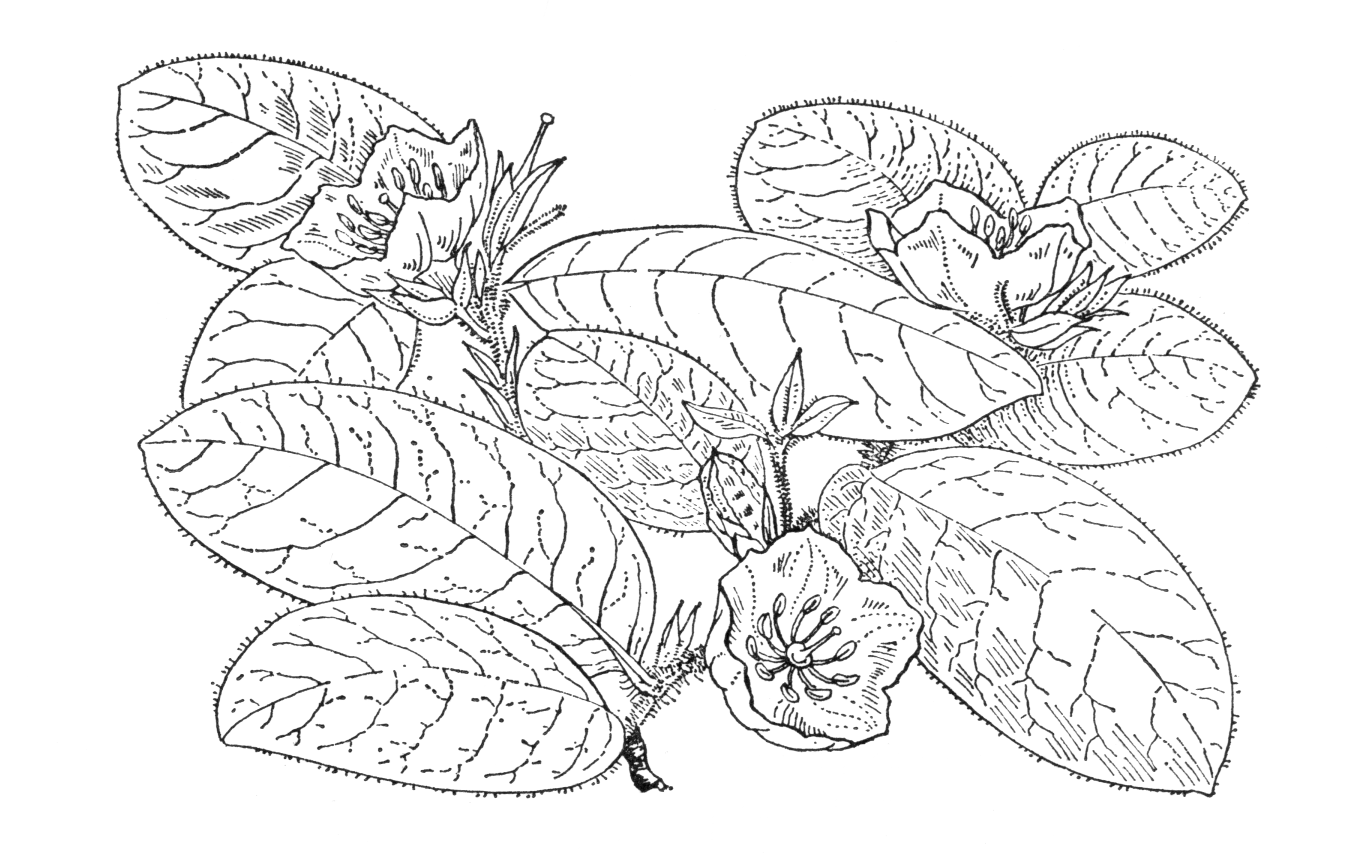Orphanidesia gaultherioides
Credits
Article from Bean's Trees and Shrubs Hardy in the British Isles
Recommended citation
'Orphanidesia gaultherioides' from the website Trees and Shrubs Online (treesandshrubsonline.
Genus
Synonyms
- Epigaea gaultherioides (Boiss. & Bal.) Takhtadjan
Other taxa in genus
A prostrate evergreen shrub, forming mats in the wild several feet across and 6 to 9 in. deep; stems, leaves (especially the margins and upper surface), petioles, inflorescence rachis, and bracts all bristly. The leaves are mostly oval or elliptic-oblong, acute to slightly obtuse at the apex, rounded to cuneate at the base, 31⁄4 to 43⁄4 in. long, dark green above, paler beneath, rather conspicuously net-veined on both sides; petiole about 1⁄2 in. long. Inflorescence a short, slightly zigzagged spike, bearing one to three sessile flowers; bracts narrow-lanceolate; bracteoles two. Sepals five, appressed to the corolla, lanceolate-elliptic. Corolla pale pink, bowl-shaped but narrowed abruptly at the base into a short tube, five-lobed, slightly frilled, 11⁄2 to 13⁄4 in. wide at the mouth, hairy inside towards the base. Stamens ten, filaments hairy at the base. Flowering time April. Ovary oblong, glabrous; style slender, glabrous, about 1⁄2 in. long. Capsules oblong, about 3⁄8 in. long, shortly stalked, containing numerous brown seeds. Bot. Mag., n.s., t. 14.
O. gaultherioides occurs wild in a very small area in the mountains of N.E. Anatolia, near the Russian border, beyond which it extends for a short distance. It was discovered by Balansa, in fruit, in July 1866, and described nine years later. The enterprising Dr Dieck of Zoschen offered it in his catalogues for 1891 and 1892, but it was probably not introduced to Britain until 1934. In August of that year, the plant-collector E. K. Balls, accompanied by Dr W. Balfour Gourlay, found it again near the type-locality, growing at 3,000 to 4,000 ft on a torrent that flows into the Black Sea just west of Rize. Here it was associated with Rhododendron ponticum and Vaccinium arctostaphylos. The species has also been found farther inland near Artvin, growing with Rhododendron ungernii and R. smirnowii.
Seeds received from Dr Balfour Gourlay germinated in Dr Fred Stoker’s garden in 1937, and he gave the first full illustrated account of the species three years later,in Journ. R.H.S., Vol. 65, pp. 210–11 and figs. 55–6. One of his plants provided the material for the plate in the Botanical Magazine, cited above.
O. gaultherioides needs a moist, peaty soil and a shady position, but in some gardens it has proved shy-flowering and not altogether hardy. It received an Award of Merit on March 3, 1953, when shown from the R.H.S. Garden at Wisley. This was a potted plant from the Alpine House, but it is also grown there successfully in the open ground. Being so scarce in commerce, it is best grown under glass until a stock has been raised. Seed is the best means of increase, but it has been found at Wisley that the capsules are usually eaten by slugs before they can be harvested. It can also be propagated by layers.

